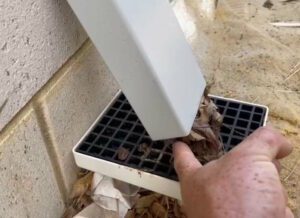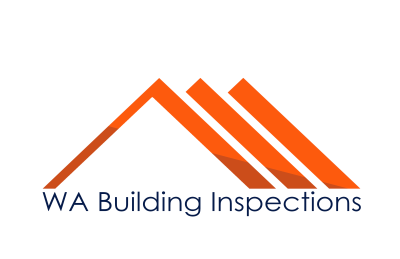G’day! I’m Russell McCarthy, the lead building inspector at WA Building Inspections Perth, and today, I want to take you through a real-life scenario that not only highlights the importance of adhering to Australian standards but also demonstrates the impact of such compliance on the overall integrity of our construction projects. Specifically, I’ll delve into one critical aspect of AS3500 3, an Australian standard that recently came under the spotlight during one of my inspections.
During a new house stage inspection in Mandurah, Perth today, the builder on site approached me with a question that’s crucial for anyone involved in construction and plumbing in Australia.
“Why do the Australian standards, particularly AS3500 3, require a 75mm gap between the base or the top of the downpipe and the greater drain?” This question isn’t just about ticking a box for compliance; it’s about understanding the essence of the standard and how it affects the functionality and safety of our buildings.
The Significance of the 75mm Gap According to AS3500.3
Let’s focus on the gap—the 75mm gap, to be exact. This specification from AS3500.3 is not a random figure but a carefully considered requirement that serves a dual purpose in the construction and maintenance of stormwater drainage systems. “So this is the gap we’re talking about, and that distance needs to be 75mm,” I explained, pointing out the critical nature of this measurement during the inspection.
The rationale behind this gap is twofold. Firstly, it’s a preventive measure designed to ensure that downpipes do not become blocked with debris, leaves, or other materials that could compromise the drainage system as you can see in my video above. This is particularly pertinent in areas like Perth, where sudden downpours can quickly test the limits of any stormwater management system.
Secondly, the gap facilitates an essential inspection zone. “It allows for that to not happen and get kicked out and also allows a 75mm inspection zone,” I emphasised during my explanation. This space is not merely a buffer; it’s an access point for inspectors and maintenance personnel, ensuring that they can adequately assess and service the downpipe and its connection to the broader drainage system.
More Than Just Compliance: The Real-World Benefits
Adhering to AS3500 3 and its requirements, like the 75mm gapreally goes beyond regulatory compliance. It’s about embedding resilience and functionality into the fabric of our construction projects. This seemingly minor detail can significantly impact the efficiency of a building’s stormwater management system, safeguarding against water damage and the subsequent structural and financial ramifications.
In my experience, understanding and implementing the principles outlined in AS3500 3 is fundamental to not only passing inspections but also ensuring the longevity and safety of our buildings. Overlooking such details can lead to severe consequences, underscoring the importance of thorough knowledge and adherence to these standards. In a real world example how NOT following these requirements can cost you big time, in a recent building inspection in Southern River Perth, AS3500 standards were not met (for different reasons), and the consequence? A major disaster inside the home with stormwater destroying parts of the interior of the home and a MAJOR mould problem.
A Personal Takeaway
Reflecting on this interaction and the broader implications of AS3500.3, I’m reminded of the critical role we play as builders and inspectors. We’re not merely enforcing rules or constructing buildings; we’re shaping environments that are safe, sustainable, and suited to the challenges of the Australian climate. By engaging with and understanding the ‘why’ behind standards like AS3500 3, we empower ourselves to make informed decisions that enhance the quality and integrity of our work.
I hope my explanation into the requirements of AS3500 3, particularly the 75mm gap, offers valuable insights into the practical application of Australian standards in construction. It’s a testament to the notion that in our industry, knowledge is not just power—it’s protection.

as3500 3
FAQ
What is AS3500.3 and why is it important?
AS3500 3 is part of the Australian standards for Plumbing and Drainage, specifically focusing on stormwater drainage systems. It sets the guidelines for the design, installation, and maintenance of stormwater drainage systems to ensure they effectively manage water flow and prevent flooding. Adherence to these standards helps protect buildings and infrastructure from water damage.
Why does AS3500.3 specify a 75mm gap between the stormwater pipe and the drain?
The 75mm gap requirement in AS3500.3 is designed to prevent blockages by allowing debris to flow through without clogging the system. It also facilitates easy access for inspection and maintenance, ensuring the stormwater system remains operational and effective in diverting water away from structures.
Can I install a stormwater system without adhering to the 75mm gap requirement?
No, failing to adhere to the 75mm gap requirement as specified by AS3500 3 could result in non-compliance with Australian building regulations. Compliance is essential for the effective functioning of the stormwater system and for meeting legal building standards.
How often should stormwater systems be inspected to ensure compliance with AS3500.3?
Stormwater systems should be regularly inspected to ensure they remain compliant with AS3500 3 standards. While specific frequencies can vary depending on local regulations and the complexity of the system, it is generally recommended that inspections occur at least annually or after significant weather events that could impact the system’s performance.
What are the consequences of not complying with AS3500 3 standards for stormwater drainage?
Non-compliance with AS3500 3 standards can lead to several consequences, including increased risk of flooding and water damage, potential fines and penalties from local authorities, and the requirement to redo non-compliant work. Additionally, it can affect building insurance and decrease property value.


